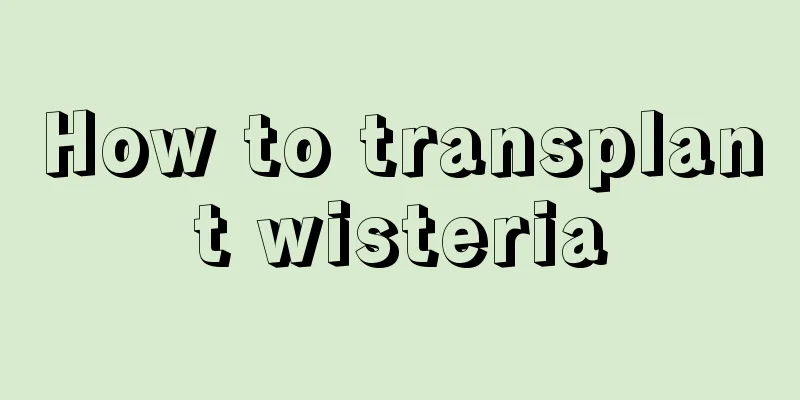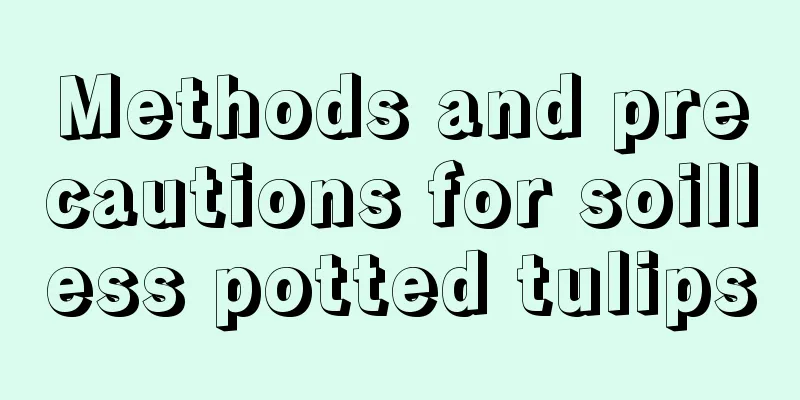How to transplant wisteria

Environmental requirements for wisteria transplantationsoilWisteria has a deep root system, a deep taproot, and few lateral roots, so the survival rate of transplantation is low. Therefore, you should choose dry soil with a deep soil layer, fertile soil and good drainage. When choosing potting soil for home transplanting, try to choose soil from highlands that is relatively fertile and dry. FertilizationThe soil obtained directly from nature has relatively poor fertility, so a small amount of base fertilizer should be applied, and animal manure can be chosen. Light water supplyWisteria does not require separate care to grow. After transplanting, just place it outdoors or on an open balcony to avoid rain. Proper watering is not necessary, normal sunlight exposure is enough. Transplantation methodPlanting, stentingWisteria flowers grow in a twining pattern, so they must be planted before transplanting. Build a sturdy trellis around it and tie the thick branches to it, allowing them to grow around and around. Wisteria has a long lifespan, with thick branches and lush leaves, so the support must be solid and durable. Potting and plantingSome families grow wisteria in the open field, and they can plant it directly after setting up the support. If it is a flowerpot, be sure to plant the plant in the center of the pot to prevent the plant from becoming too strong later and causing the flowerpot to tilt and fall. Pruning. Usually, seedlings cannot grow flower buds quickly when they are transplanted, but if the plants have been planted for several years, there will be no flower buds after transplantation. You should consider pruning the plant. The plant grows too vigorously, and its lush branches and leaves take up most of the nutrients. At this time, appropriate thinning of the branches and leaves, or appropriate topdressing can enable it to bloom in time. Precautions✔The survival rate of wisteria transplantation is low, so when transplanting, be careful to retain a small amount of soil on the roots, or reduce the number of branches. ✔If you want the wisteria to bloom in time after transplantation, you need to apply appropriate fertilizer. During the growing season, top dressing is usually applied 2 to 3 times, with more potassium fertilizer applied. When flowering, weak branches should be pruned in time to promote the formation of branch buds. ✔Wisteria usually buds in March and blooms in April, but the maintenance conditions vary slightly. |
<<: How to grow gardenia in winter
>>: How to Make Your Own Gardenia Fertilizer
Recommend
Can I water the flowers after fertilizing them?
1. Can I water it? Flowers can be watered after f...
These three thorny plants are perfect for making fences!
Rosa roxburghii Simply put, sea buckthorn is a co...
How many kilograms can one acre of land produce?
Plantain yield per mu Plantain is a common medici...
How to breed Yamato Nishiki
Propagation by cuttings The propagation rate of Y...
What insects do pitcher plants rely on for pollination? How to distinguish males from females?
1. What insects do they rely on for pollination? ...
When is the best time to plant lily of the valley?
Lily of the valley, also known as bluebell, was o...
Dendrobium cultivation methods and precautions
1. Breeding methods 1. Soil To grow Dendrobium, y...
What flowers are suitable for the bedroom?
1. Kalanchoe The reason why Kalanchoe is placed f...
What to do if tuberose only grows leaves but does not bloom
The reason why tuberose only grows leaves but doe...
Three common misunderstandings about flower cultivation
Misconception 1: Water more. Giving flowers more ...
Can boxwood be planted in the yard?
Can boxwood be planted in the yard? Boxwood can b...
When should green onions be planted?
When planting green onions , you must master the ...
The Flower Language and Cultural Symbolism of Osmanthus
The Flower Language of Osmanthus Osmanthus flower...
The role of calla lily
The efficacy of calla lily Not only is the juice ...
Common diseases of peony and their prevention and control methods
Common diseases of peony: leaf spot Leaf spot dis...









